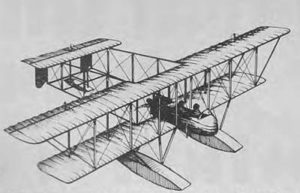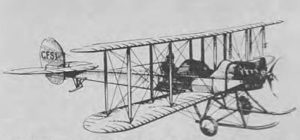- Author
- Issacs, Keith, AFC, ARAeS, Group Captain, RAAF (Retd)
- Subjects
- Naval Aviation
- Tags
-
- RAN Ships
- HMAS Brisbane I, HMAS Encounter I, HMAS Huon I, HMAS Yarra I, HMAS Una, HMAS Swan I, HMAS Pioneer, HMAS Australia I, HMAS Sydney I, HMAS Parramatta I, HMAS Melbourne I
- Publication
- December 1972 edition of the Naval Historical Review (all rights reserved)
On May 13 1912 the Royal Flying Corps came into being with a Military Wing and a Naval Wing. In 1913 the British light cruiser, HMS Hermes, was fitted out to accommodate two seaplanes and, later in the year, another ship was taken over by the Admiralty while still lying in frame on her building slip. She was completed in 1914 as the first seaplane carrier to be built as such from the stocks. Her name was HMS Ark Royal and she was the forerunner of two similarly named later aircraft carriers, the first of which achieved fame in the 1939-45 War.
The Royal Naval Air Service was formed on July 1 1914, and on the 28th Longmore, flying a three-bay Short Folder Seaplane, made the first successful air-torpedo drop by a naval pilot in Great Britain. Apparently test pilot Gordon Bell had made the very first drop the previous evening. The Royal Naval Air Service went on to establish a remarkable war record before it was incorporated into the newly formed Royal Air Force on April 1 1918. Its achievements are outside the scope of this volume, but several facts bear mentioning.
In 1914 the Naval Air Service had 91 heavier-than-air craft and 8 lighter-than-air craft, and by March 31 1918 these figures had increased to 2,815 and 246 respectively. On August 2 1917 Squadron-Commander E.H. Dunning made the first deck landing on a British ship – the first ever to be made on a ship under way – when he flew a Sopwith Pup on to a fo’c’sle flight deck fitted to the battle cruiser HMS Furious, before it was fully converted to an aircraft carrier. Two years earlier, on November 3 1915, Lieutenant H.F. Fowler in Bristol Scout C 1255, had made the first normal landplane take-off from a British carrier, HMS Vindex, and two days later Flight Lieutenant R.J.J. Hope-Vere flew a Deperdussin monoplane from an improvised platform on the light cruiser HMS Aurora. During these years several Australians served with the Royal Naval Air Service, and the flying achievements of four of these pilots, R.A. Little, R.S. Dallas, S.J. Goble and R.P. Minifie, are contained in the subsequent aircraft narrative pertaining to the famous naval fighting scout, the Sopwith Triplane.

In Australia discussion about the formation of a naval air service began in earnest in 1913 with proposals to establish three naval aviation units for the defence of Australian bases. This paper planning came to nothing, but the formation of a naval air wing was more or less a continuous wartime topic. The flights in May 1914 of a Maurice Farman seaplane on Sydney Harbour created more than a little interest and within a few months this same seaplane, which on the declaration of war had been presented to the Central Flying School at Point Cook, was conveyed to Rabaul by the Navy. As previously related, the seaplane and a BE2a were packed in crates and shipped aboard HMAS Una. Other naval and air associations followed. During the first half of 1915 HMAS Pioneer took part in the action against SMS Konigsberg in East Africa, where Sopwith and Short seaplanes, together with Henry Farman and Caudron landplanes of the Royal Naval Air Service, spotted for the naval bombardments. About the same time, on April 25 1915, the Australian submarine AE2 passed through the Narrows of the Dardanelles and was able to operate for several days in the Sea of Marmora due, in part, to the diversion tactics of naval aircraft from HMS Ark Royal and Wing Commander Samson’s No. 3 Squadron. Samson’s book, Fights and Flights, devoted seven chapters to his squadron’s part in the Dardanelles campaign and as often happened in so many early aviation books, an Australian gets particular mention. Describing how he operated a BE2a, two BE2c biplanes, two Sopwith Tabloids, a French Brequet and a Canton Unne-engined Maurice Farman, Samson went on to record that:
‘Captain Jopp, an Australian who was a great fellow, usually came with me. As well as Helles and the Fleet we . . . had Anzac to look after; and we did a lot of artillery cooperation for the Australians registering their heavy batteries on to the Turks’ guns. Jopp was the observer whom I detailed to specialise on Anzac: he had an eye like a hawk and it wasn’t long before he had discovered most of the guns that were causing trouble . . .’ (C.R. Samson, Fights and Flights (1930) p225)

Another good example of international naval-air co-operation occurred in the Middle East on February 25 1917. In the early dawn a BE2e of No. 1 Squadron, Australian Flying Corps, flown by Lieutenants A.T. Cole and J.M. Glen, directed the firing of a French battleship which shelled Jaffa, and simultaneously three aircraft led by Major R. Williams bombed the German aerodrome at Ramleh at first light after a flight in the dark.




